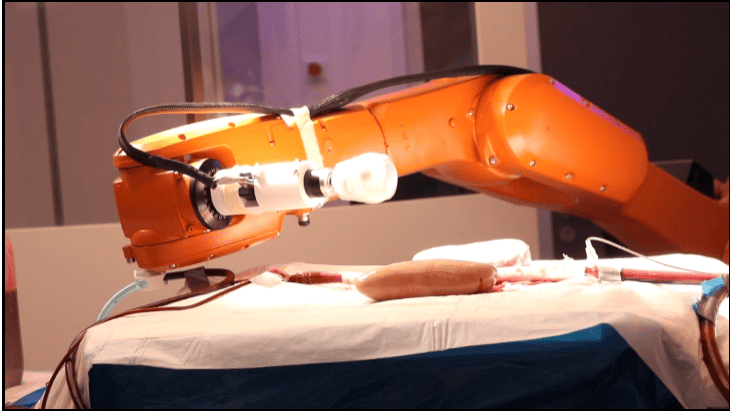
Using a robotically controlled rotating magnet, researchers from the University of Twente and the Radboudumc sent helical robots through a detached aorta containing kidneys, the university says in a press release.
- Mini bones can ‘swim’ through veins wirelessly, even against the current.
- Many valuable applications can be imagined, such as removing blood clots and delivering drugs.
Using a robot-controlled, rotating magnet, they steered the robots through the arteries. The researchers recently received a grant from Health Holland to further develop the technology for removing blood clots.
One in four people
Every year, one in four people worldwide die from conditions caused by blood clots. A blood clot blocks a blood vessel, preventing blood from delivering oxygen to certain parts of the body. Surgeons currently use flexible instruments to remove the blood clot and get the blood flowing again, but some parts of the body are difficult to reach. With their small size, the tiny robots can reach these areas.
Against the current
The researchers showed that these millirobots can travel through blood vessels. To do so, the researchers had to overcome a number of challenges. The millirobots must be powerful enough to pass through the blood stream, and they must be able to swim both against the current and with the current. They also need to be controlled and located very precisely. To avoid damaging blood vessels, they must be biocompatible.
For their experiment at the University of Twente’s Technical Medical Centre, the researchers used a real aorta and kidneys.

Controlled with precision
For the experiment, the researchers used a spinning magnet controlled by a robotic arm to wirelessly steer the millirobots through the blood vessel. Using an X-ray machine, they located the millirobots as it swam through the aorta. The researchers used a maximum blood flow in the aorta of 120 ml per minute. But with a stronger magnet, the millirobots could swim through strong currents. The millirobots swam stable straight stretches with the current and against the current. They succeeded with one, but also with several robots simultaneously.
The robots themselves are 3D-printed, screw-shaped objects with a small permanent magnet inside.
Valuable applications
“These millirobots have enormous potential in vascular surgery,” says Michiel Warle, vascular surgeon at Radboudumc. “Currently, we use blood thinners and flexible instruments, but a millirobot can swim to hard-to-reach arteries. This requires only minimal incisions to insert them.” In a new collaboration with Radboudumc and Triticum Medical (Israel), the researchers will further develop the millirobots so that they can wirelessly remove blood clots.
Besides removing blood clots, other applications are also conceivable. The robots can deliver drugs to very specific places in the body where the drug is most needed. That way, we have minimal side effects in the rest of the body.

